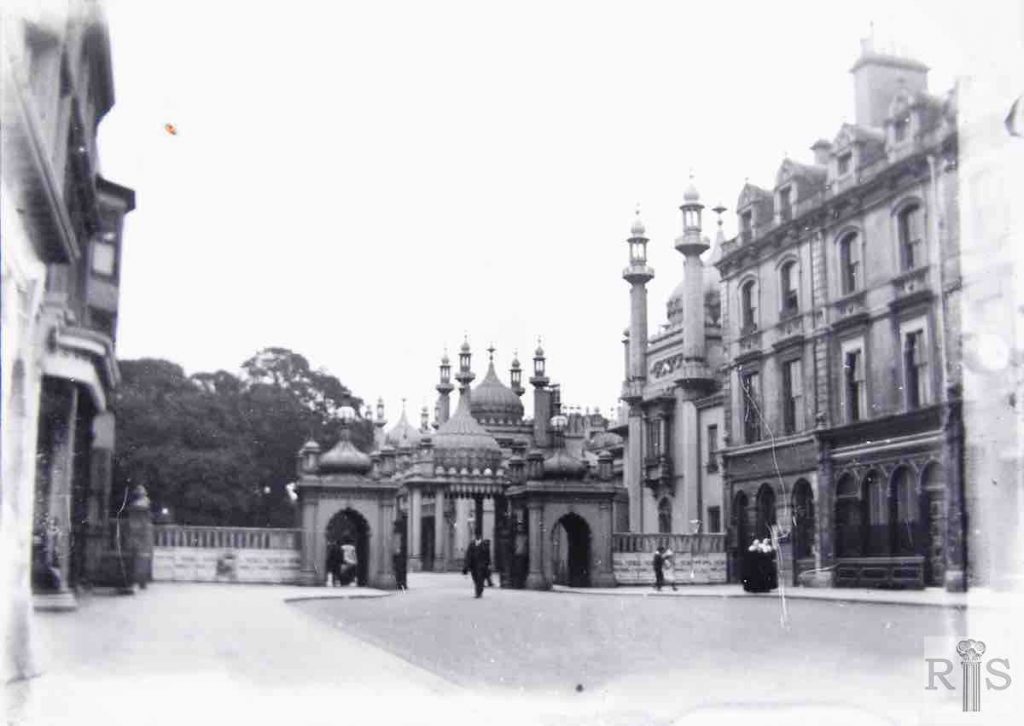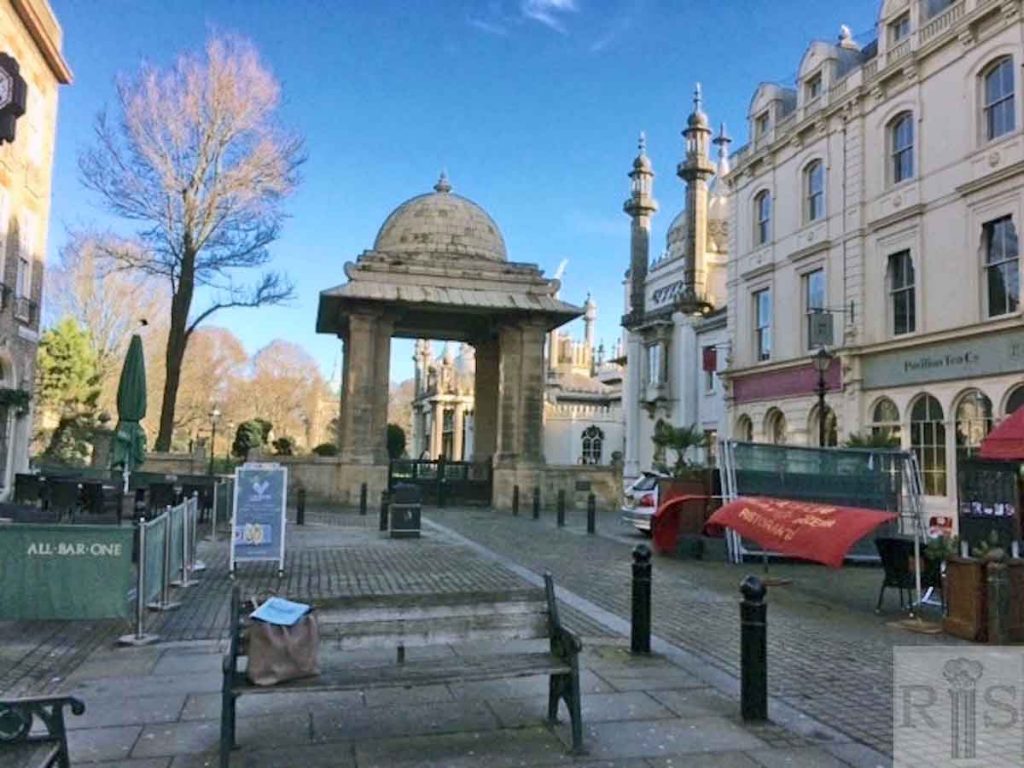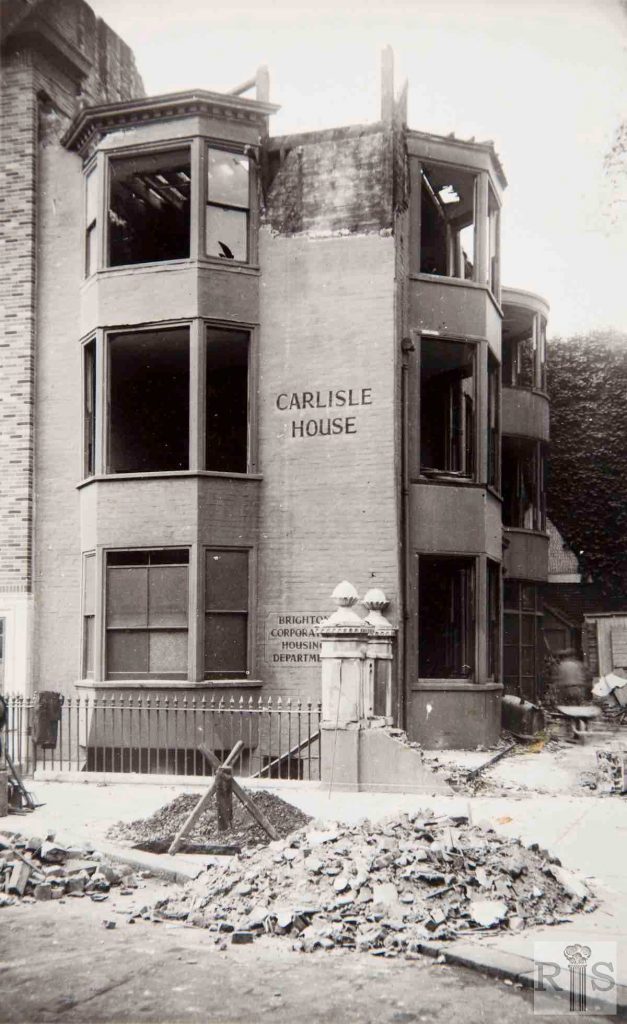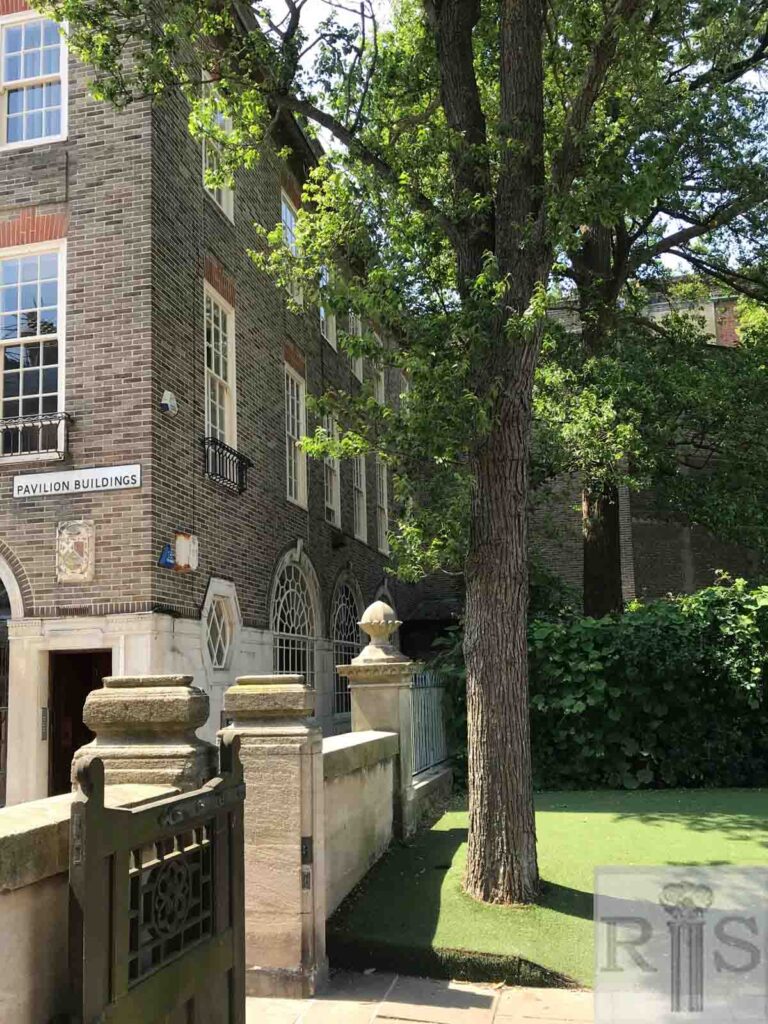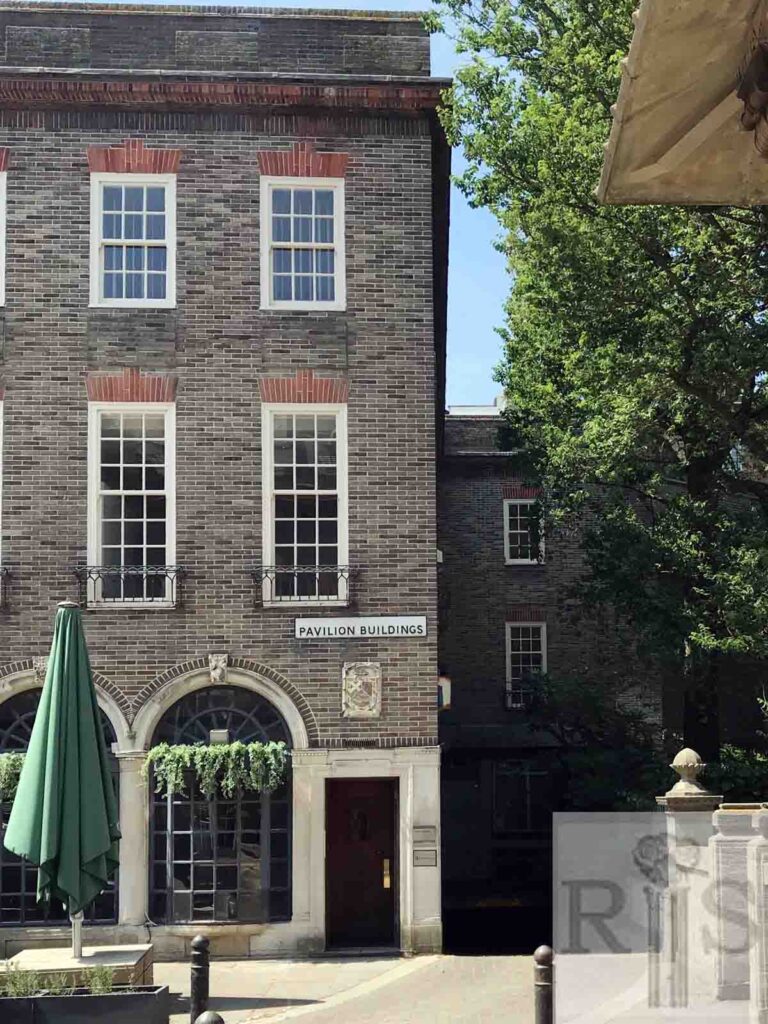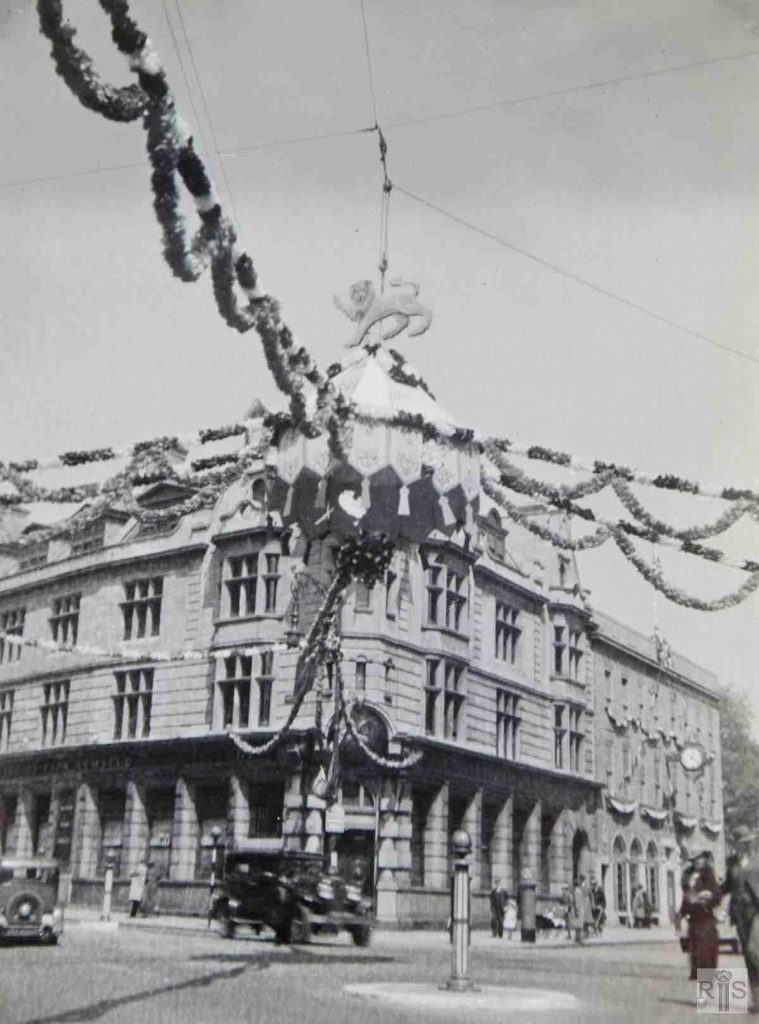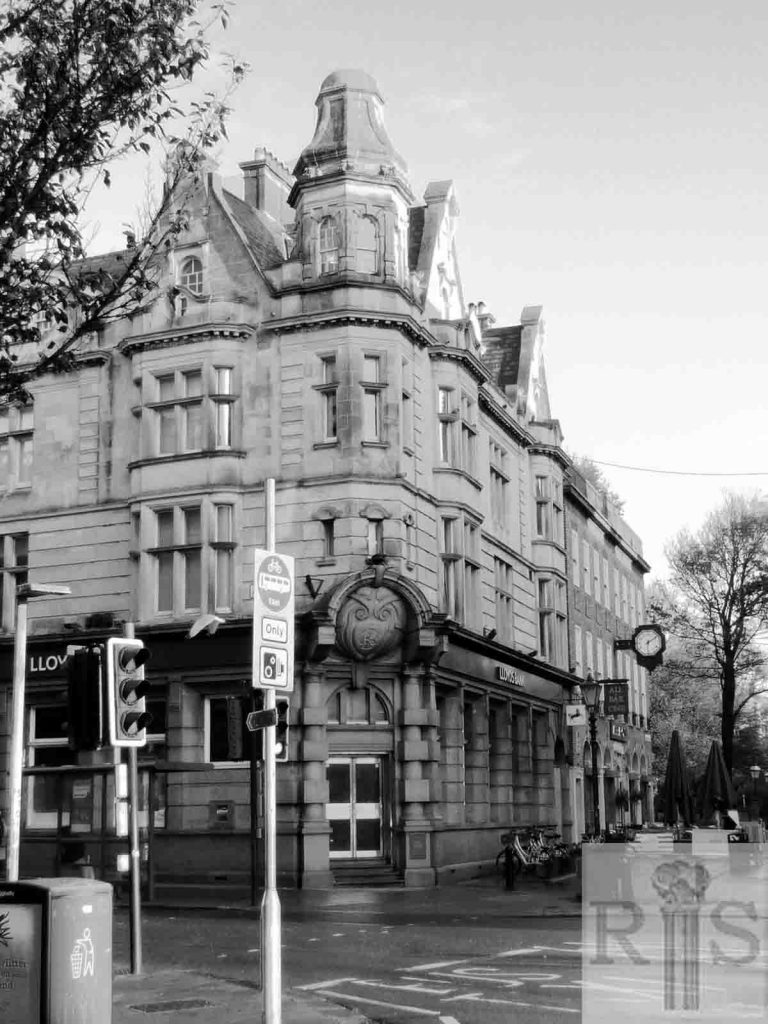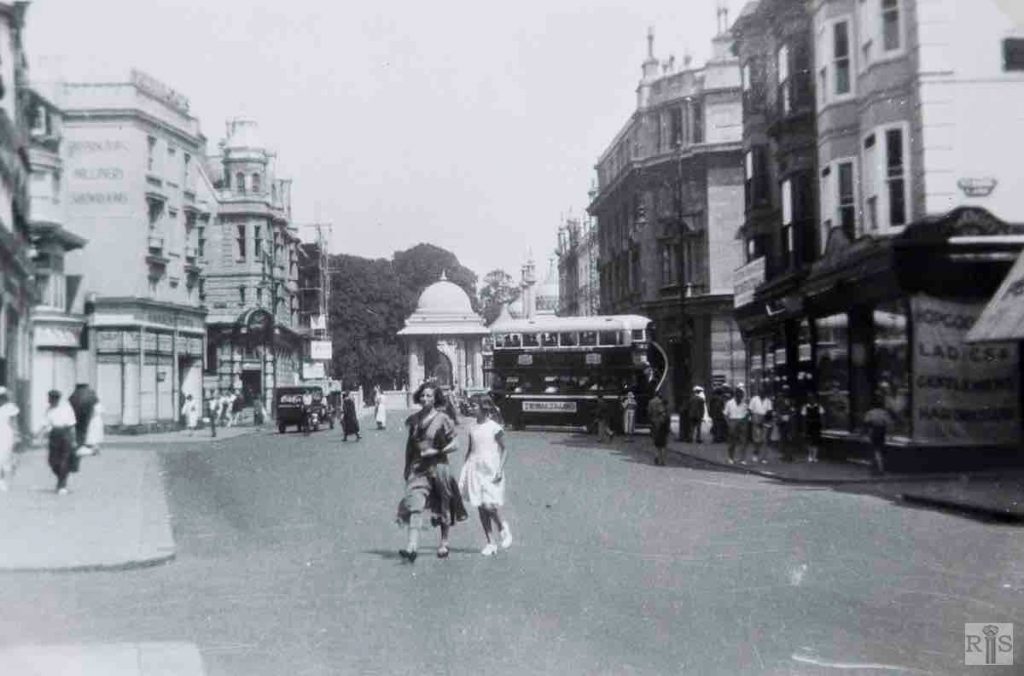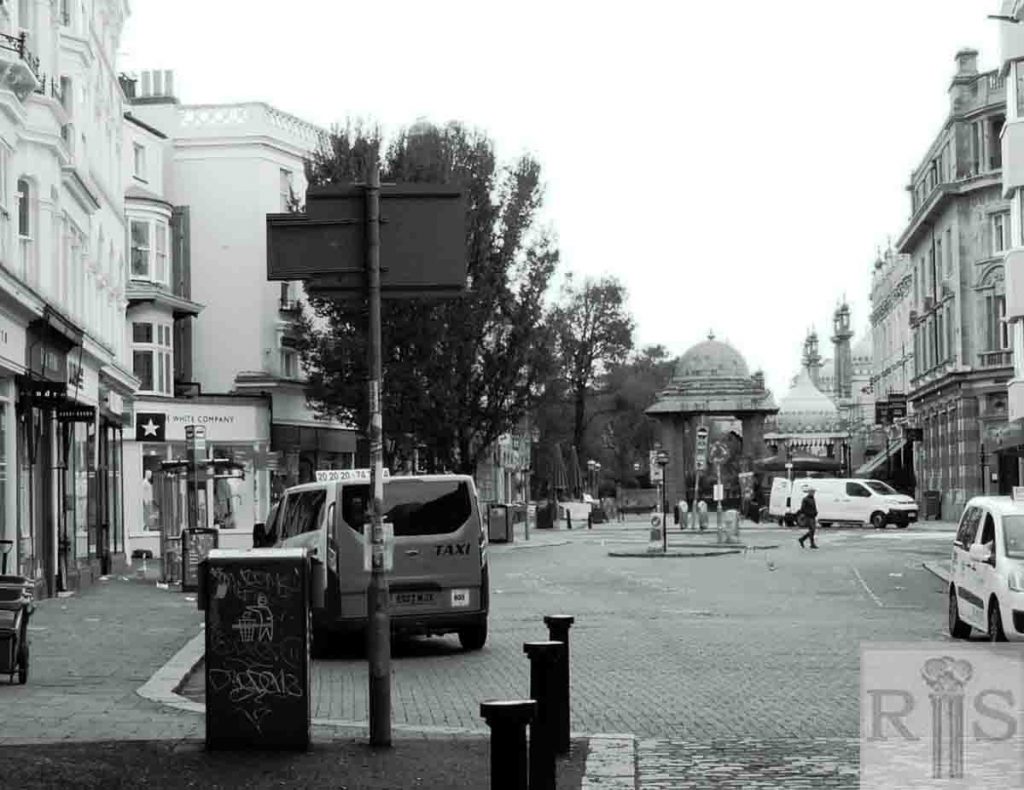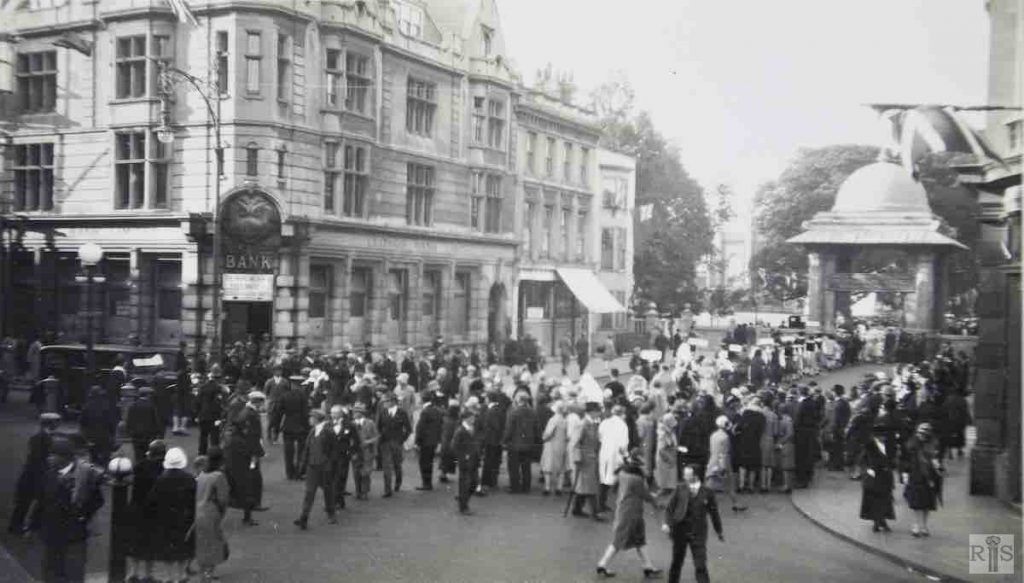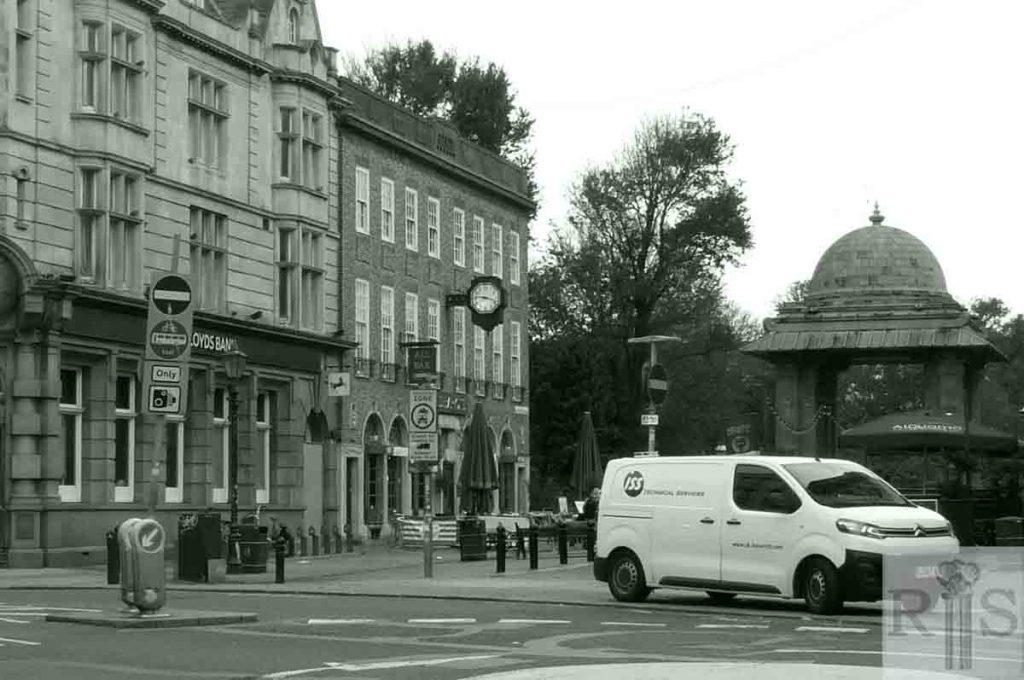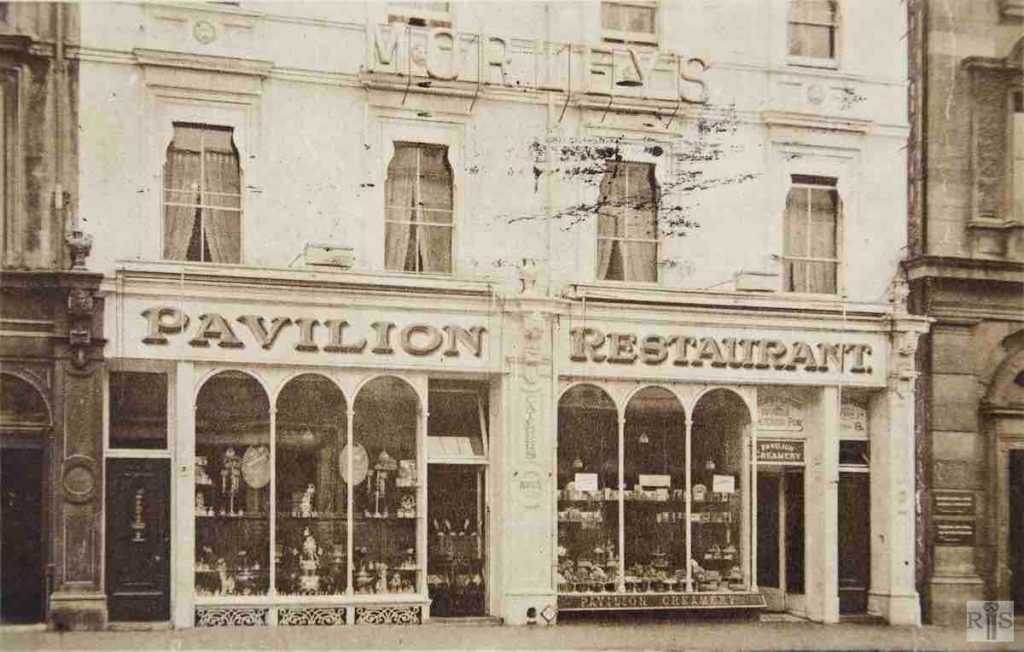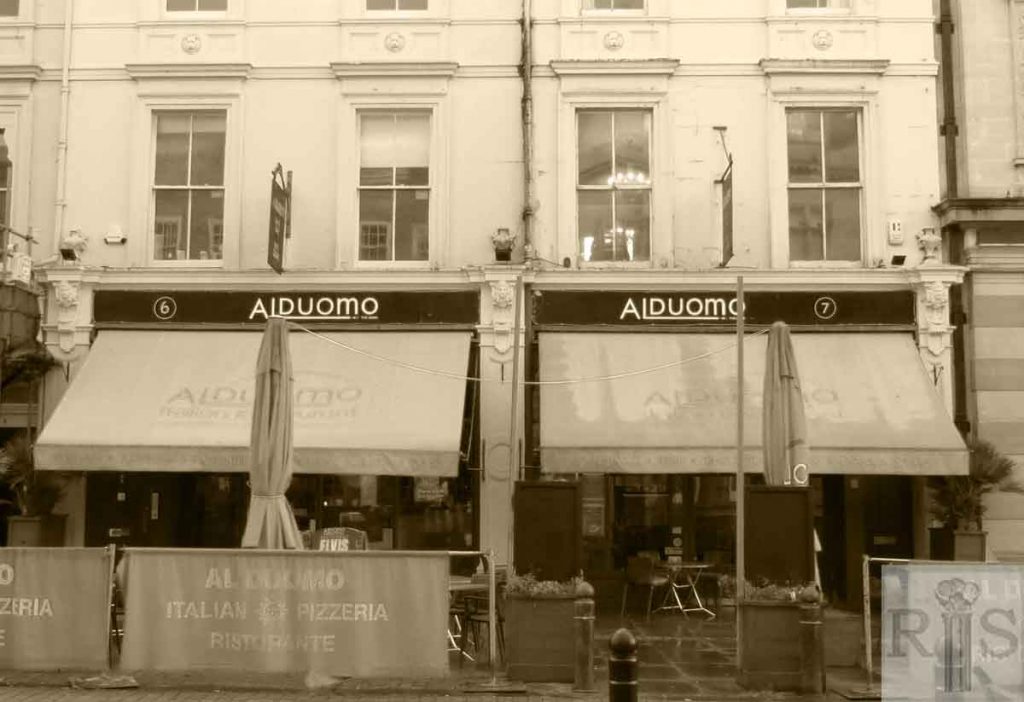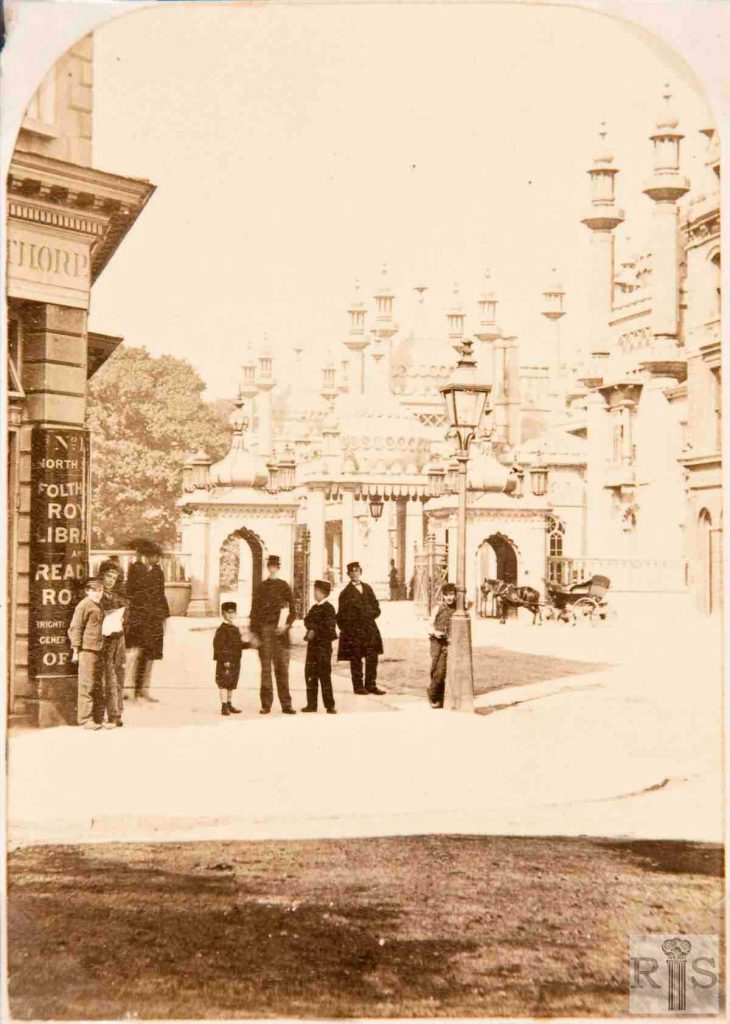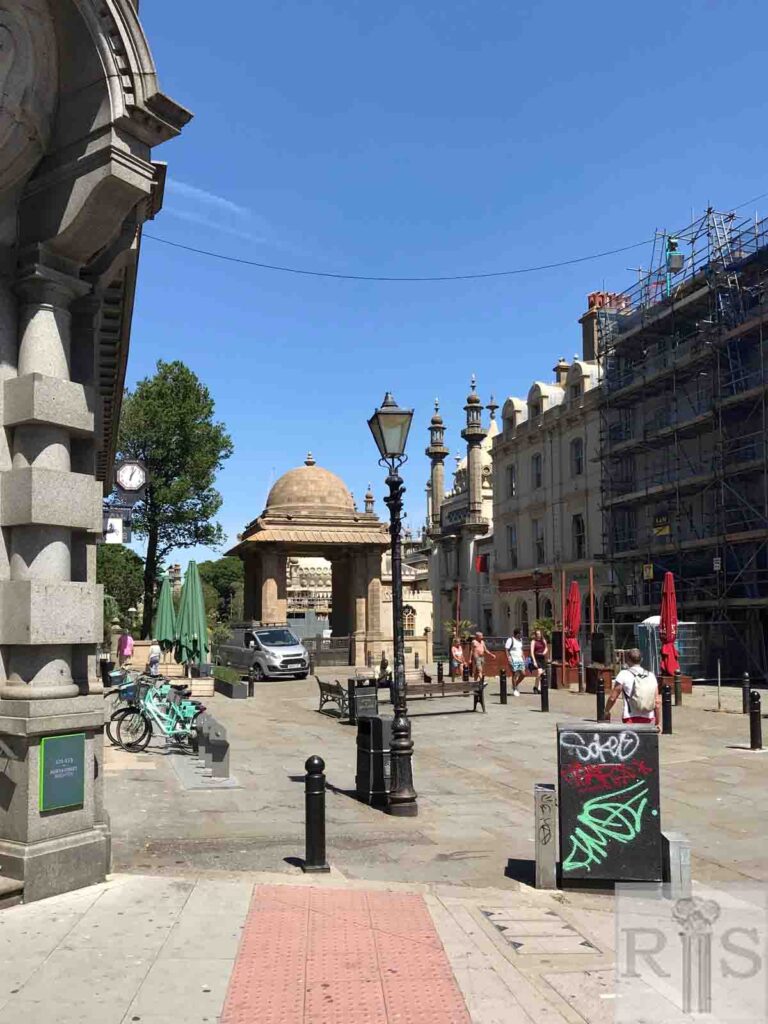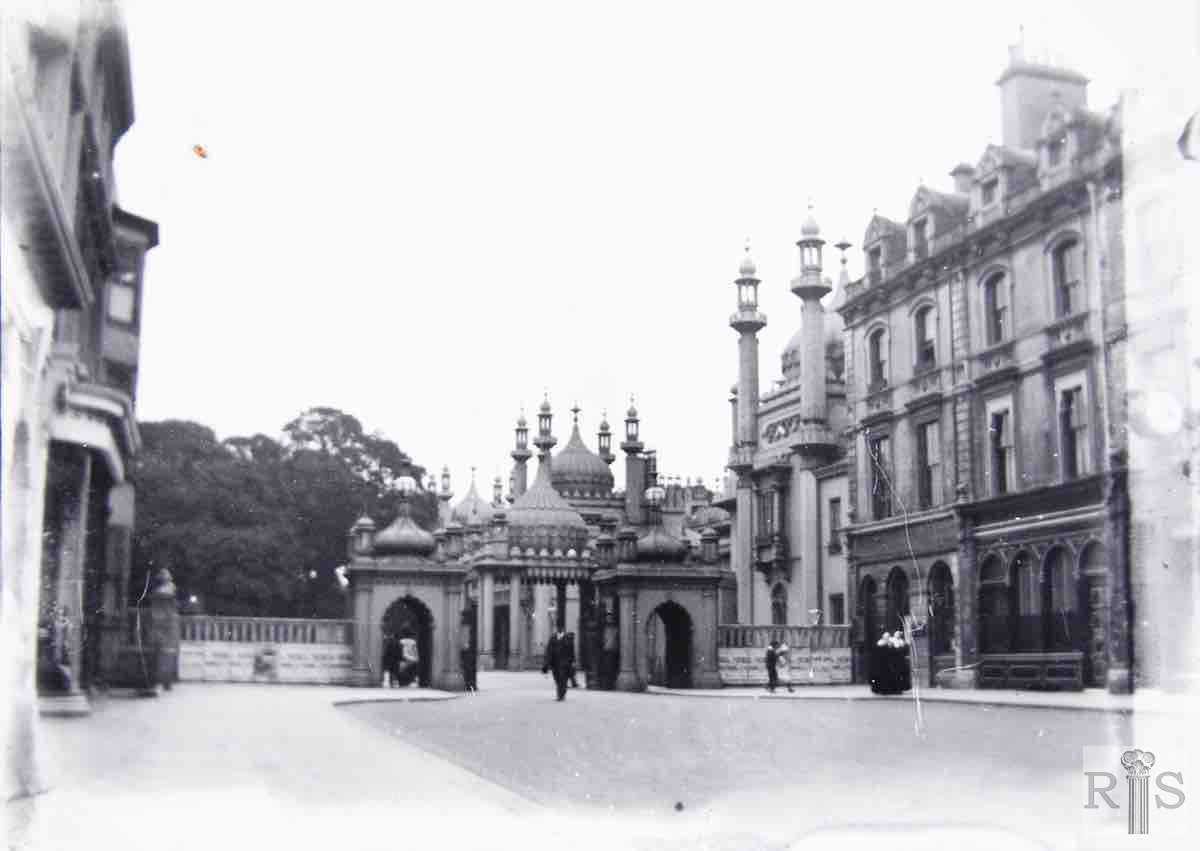
James Gray: Three amateur-taken photographs [jgc_30_012, 013 and 014] with nothing calling for special comment, since many such photographs have been taken over the years. The year is unknown but they look as if they date from 1912 period. jgc_30_012
2018: The present South Gate (Indian Memorial Gate) is the third to be built on this site: the gate in the c1912 image is the second, built after Brighton Corporation’s purchase of the Pavilion in 1850. The Indian Gate, unveiled in 1921, was a gift from India to the people of Brighton to commemorate the treatment of Indian soldiers in the Pavilion when, in 1914 and 1915, it was used as a military hospital.
James Gray: Carlisle House, 3 Pavilion Buildings, was, with adjacent houses, built about 1780. They were purchased by William IV and enclosed within the Pavilion Estate in 1831. When Brighton Corporation purchased the Royal Pavilion in 1850, the Earl of Carlisle negotiated the sale on behalf of the Crown, and the house was named after him. It was demolished in 1934 for an extension of the Brighton Herald premises. jgc_21_175
2020: The building on the left, previously occupied by the Brighton Herald, now houses a branch of the All Bar One restaurant and bar chain and outwardly remains very similar to the earlier photograph. Carlisle House was used as Brighton Corporation Housing Department offices in the early 1930s. Part of the land it stood on is now inside the Pavilion Gardens. (Photographer: Mike Doodson)
James Gray: See caption for jgc_21_175 above. jgc_21_176
2020: One of the pillars that used to be next to Carlisle House is now part of the wall surrounding Pavilion Gardens. See also caption for jgc_21_175 above. (Photographer: Mike Doodson)
James Gray: A good view of the North Street end of the street, showing the Capital and Counties Bank, at the corner of Pavilion Buildings and Treacher’s Library on the facing corner. The period seems to be about the turn of the century. jgc_09_093
2019: On 5 March 1990 cars were prohibited in East Street between Steine Lane and Avenue and pedestrianisation was formally inaugurated on 28 April 1990. The northern section of East Street is normally a busy taxi rank but this photograph was taken early in the morning before they had started to congregate. Treacher’s Library was rebuilt in 1924 and formed part of Hannington’s department store which itself closed in 2011. (Photographer: Ron Fitton)
James Gray: This view, at the junction of East Street with Castle Square, dates from May 1928, when the Greater Brighton celebrations were being held – hence the procession. At this period Lloyds Bank was being extended to take in adjoining premises in North Street. While these alterations were proceeding the Bank was housed next door in Pavilion Buildings, on the site now occupied by the Brighton Herald Offices. jgc_09_106
2019: The building at the corner of Pavilion Buildings remains a Lloyds Bank in 2019 at 173 North Street. Both buildings just beyond the bank were replaced by a neo-Georgian building erected in 1934. The India Gates date from 1921 and were designed by Thomas Tyrwhitt in a simple Gujarati style. It was erected as a gift from the people of India to the people of Brighton to commemorate the Indian soldiers wounded during the First World War who were tended in the military hospital established on the Royal Pavilion estate. (Photographer: Ron Fitton)
James Gray: One of four photographs (jgc_09_107, 108, 109 and 110) calling for little comment. Additional Information: In 2007 it is the Royal Pavilion shop and Tourist Information. jgc_09_108
2019: Originally built in 1852-53 as terraced houses, Nos 6 and 7 Pavilion Buildings had by 1871 already become commercial properties and well before the end of the century had been established in the restaurant trade which continues to this day. It currently operates as a 300 seat Italian restaurant. (Photographer: Ron Fitton)
James Gray: A much earlier photograph that shows the corner building occupied by Robert Folthorp, proprietor of the Royal Library and Reading Room. The photograph dates from the early 1860s. jgc_21_173
2020: This shows how the south entrance to the Pavilion Gardens has changed. In the 1860s photo you can see the old south entrance, built in the 1850s. The 2020 photo shows the much larger Indian Gate, presented to the people of Brighton by India in 1921, as thanks for the care of 12,000 Indian soldiers wounded in the 1914-1918 war and nursed in Brighton hospitals. About 4,300 of the Indian soldiers were treated in emergency hospitals inside Brighton Pavilion, the Corn Exchange and the Dome. (Photographer: Mike Doodson)
